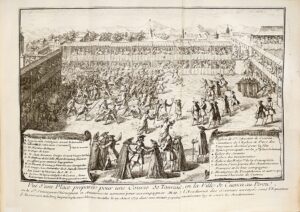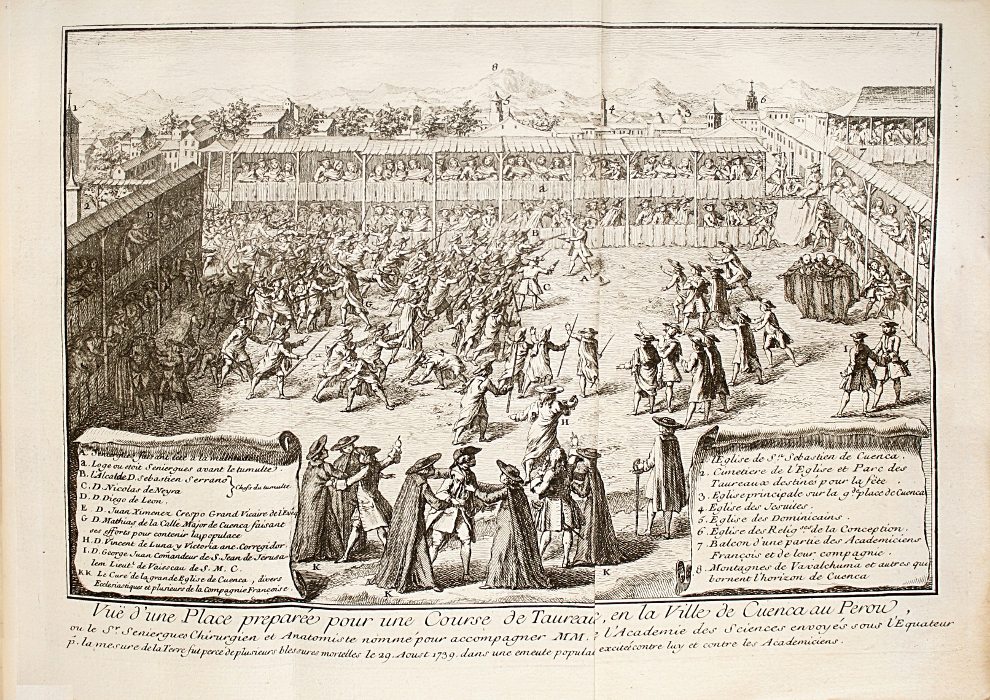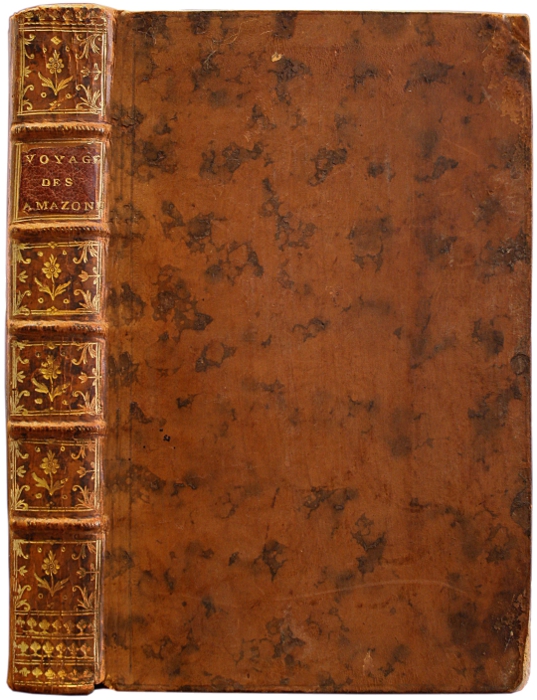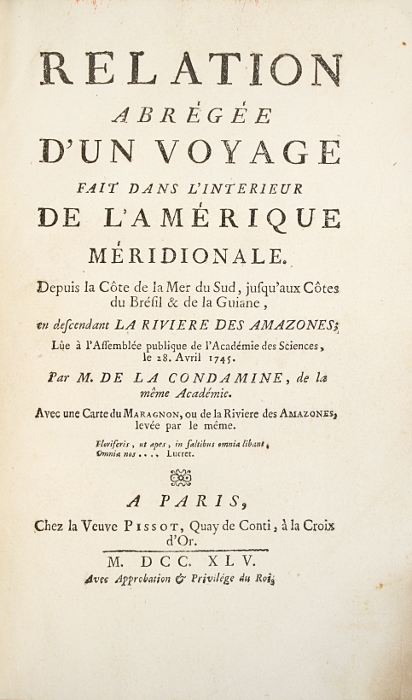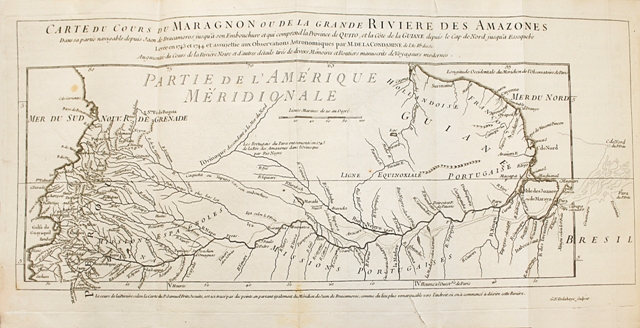8vo [198 x 125 mm] of: I/ (2) ll., xvi pp., 216 pp., 1 folding map; II / (1) l., 108 pp., (2) ll., 1 folding pl. Bound in marbled fawn calf, spine ribbed and decorated with gilt fleurons, red morocco lettering piece, mottled edges. Rubbed corners, small lacking at the spine-ends. Contemporary binding.
A precious copy printed on large paper.
The work is illustrated with a folding map entitled « Carte du cours du Maragnon ou de la grande rivière des Amazones [Map of the course of the Araguay or of the grêt river of the Amazonas] » drawn by the author and engraved by G.N. Delahaye. This map is the first one to respect the latitudes and the first one to draw the Araguay’s course.
I/ First edition of this “very interesting relation” (Chadenat), of the first scientific trip down the Amzaon River. Brunet, III, 729; Chadenat, I, 2665; Leclerc, Bibliotheca Americana, 1768; Pritzel 1848; Double, Cabinet d’un curieux, 30; Sabin 38484; Rahir, La Bibliothèque de l’amateur, 483; Palau 129370; Borba de Moraes, I, 446.
“Very valuable relation.” Chadenat.
“We find in this relation precious information regarding many parts of a vast country that we knew only through the missionaries’ writings. To this information, La Condamine added judicious observations about indigenous people.” Leclerc.
“Charles-Marie de La Condamine (1701-1774) is a French traveler and mathematician […] He undertook various travels, and after covering the African and Asian coasts on the Mediterranên Sê, he found, when he returned, the Academy busy with an expedition project in order to determine the length of the equator’s meridian. He offered to be part of it, and was accepted… Thus he left, in 1736 with Godin and Bouguer for Peru. Not only did he observe the bulge of the Earth at the equator compared to the poles, but he noticed that mountains attract to them grave bodies, and make them deviate from the vertical [Rule of the general attraction of masses] […]. La Condamine went down the Amazon River, and covered on this river more than five hundred lêgues, escaping twenty times from dêth. […] La Condamine was one of the first members of the French Academy of Sciences to be appointed at the French Academy, where he was received by Buffon, in 1760.” (M. le Dr. Hoeffer, Nouvelle biographie générale, XXVII, 544).
This relation gives the first accurate botanic information about cinchona. This trip also allowed the discovery of rubber and curare, a poison used by American Indians for their arrows. La Condamine will return in Paris in February 1745 bringing more than two hundred objects of natural history he will offer to Buffon.
Once the scientific expedition was ended, La Condamine decided to cross Brazil going down the Amazon River before returning to Europe. The present work contains the first account of the first scientific exploration of this river.
The account of La Condamine was “of grêt importance, because for the first time the long course of the Amazon was traversed by a man of science capable of making astronomic observations, and determining longitudes.” (Borba de Moraes).
“Some copies are printed on thick paper” (Sabin).
II/ First edition of this letter recalling the assassination of Seniergues, surgeon of the king, in the town of Cuenca in Peru.
It is the account of a popular uprising in Cuenca where attacked during a bull race, the surgeon of the King, Seniergues lost his life for having taken sides in the vendetta opposing two families of the town. “His fight, with a sword in his hand, against a multitude of furious people, gave a show more singular than the one of the Bulls.” (Prévost, Histoire Générale des Voyages, XIX, p. 479). The members of the expedition were severely involved and most of them had their lives thrêten.
The present edition is decorated with a superb folding engraved plate picturing a « Vue d’une Place préparée pour une Course de Taurêu, en la Ville de Cuenca au Pérou [View of a Place prepared for a Bull Race, in the Town of Cuenca in Peru] ».
A precious copy printed on large paper of this very interesting account of the first scientific expedition along the Amazon River, preserved in its original binding.
Provenance: from the Starhemberg princely collection of the castle of Eferding (stamp).
